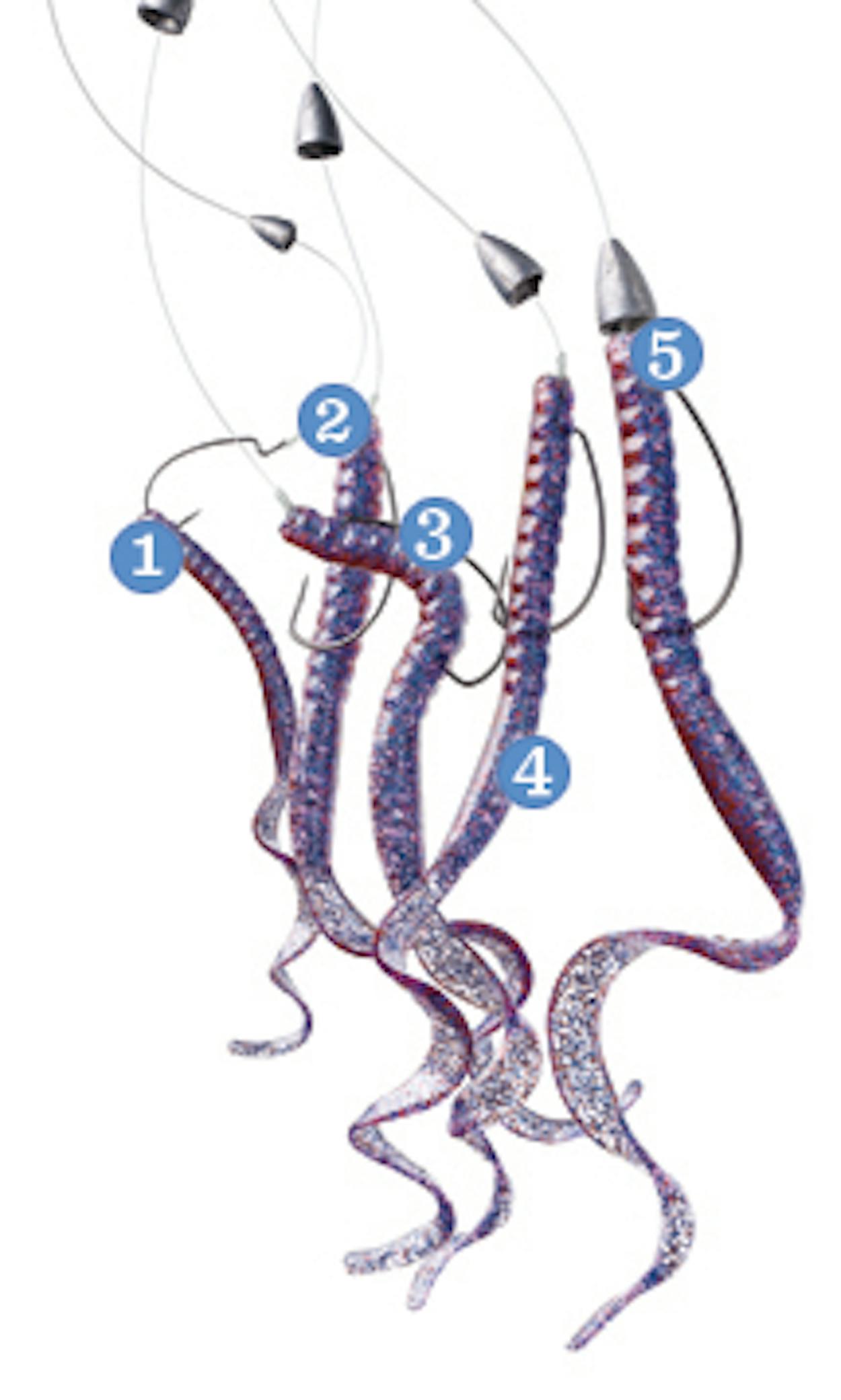Modern-day bass fishing owes its enormous popularity to two game-changing events. First, in 1949, Nick Creme rocked the angler community with the creation of the plastic bait worm. Roughly ten years later a fisherman on Lake Tyler, weary of snagging his hooks on submerged timber and vegetation, speared a plastic worm on his hook in such a way that he securely anchored the worm and buried the barb. The Texas rig was born. Why was this technique so revolutionary? “Before the Texas rig was invented, lures had exposed hooks,” says Wayne Kent, the president of the Tyler-based Creme Lure Company. “If you fished near a brush pile, the hook could burrow in the wood and cause you to lose the lure.” Now a fisherman can cast his bait into those wooded spots that bass love and know he’ll reel in more than a blue-ribbon branch. To tie a Texas rig, you’ll need three things: a plastic worm (or your preferred creepy-crawly), a hook, and a bullet weight. After you thread the bullet weight and tie the hook to a line, follow these five simple steps.
1. Insert the barbed end of the hook into the tip of the worm’s head. Push it down about a quarter of an inch until the barb pokes out.
2. Push the hook until the eyelet is flush with the worm, then give the worm half a turn so that it is parallel to the hook.
3. Bend the bait and insert the point again.
4. The barbed end should now rest flat against the worm, which is impaled through the hook at two different points.
5. Lift the worm between the entry points and bury the barbed end until the point is slightly embedded. Now you’re ready to land a Texas-size trophy.








